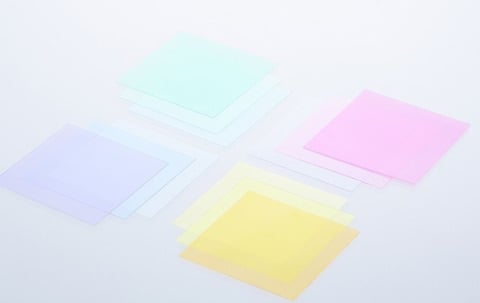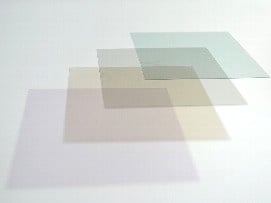Specified Wavelength Absorption Dyes
Yamada Chemical has a large selection of dyes that selectively absorb light in specific wavelength ranges from the visible light region to the near-infrared light region (400-1000 nm).
These dyes can be used for various applications such as display devices, functional lenses, and heat ray shielding (heat shielding) materials.
In addition to "solubility" in various solvents, dyes that pursue "durability (light resistance, heat resistance)" also have excellent processability with resins, and realize "permeability" that is unique to organic dyes.
In addition to the line-up products, we will propose dyes from abundant libraries to meet customer needs.
Visible Light Absorption Materials

Yamada Chemical's visible light absorption materials can selectively absorb light at specific wavelengths in the visible light range (400-750nm).
These materials are being studied for various applications such as organic solar cells and organic electrochromic materials, as well as their track record of use in thin display products.
We propose dyes with wavelengths that meet customer needs, such as high durability (light resistance, heat resistance), high transparency, and high solubility. We also offer a variety of half-value widths to meet a variety of needs, from narrow to wide areas.
Near-infrared Light Absorption Materials

Yamada Chemical has developed near-infrared light absorbing materials including functional phthalocyanine (naphthalocyanine).
In addition to the selective absorption of light in the near infrared region (750-1000 nm), these materials also achieve the high transparency that is unique to organic dyes.
In addition to its durability (light resistance, heat resistance) and high transparency, it also has excellent solubility in various solvents, making it easier to process into resins. These dyes are attracting attention for their potential applications in a variety of applications, including heat-shielding materials, anti-counterfeit inks, and various sensor applications.



